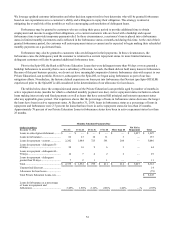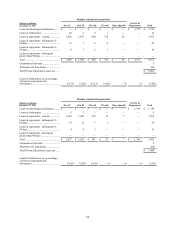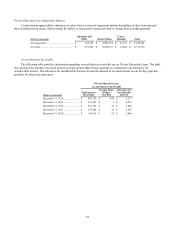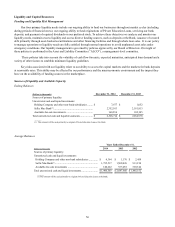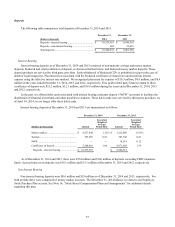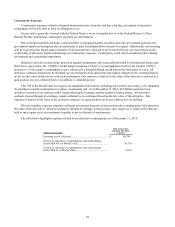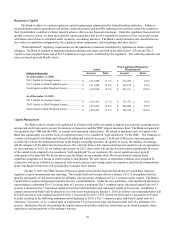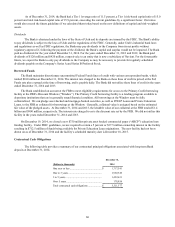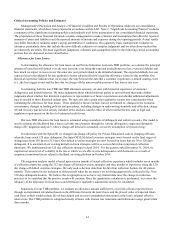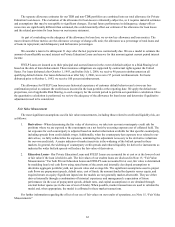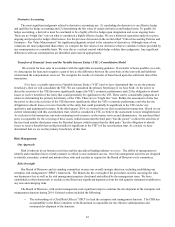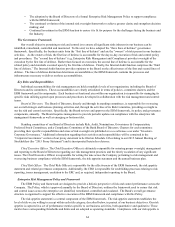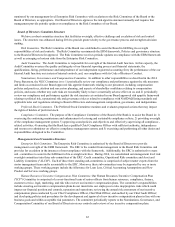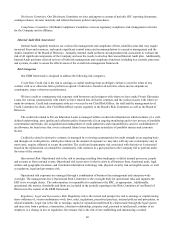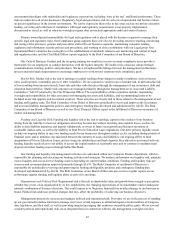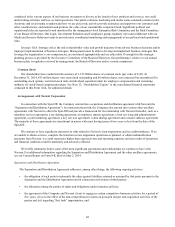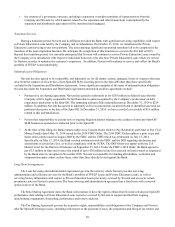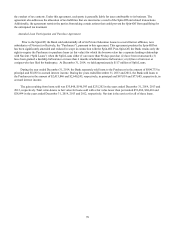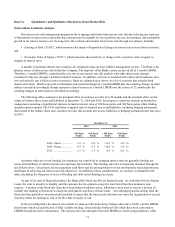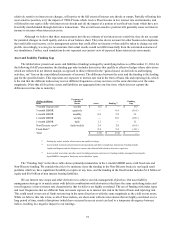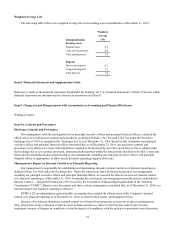Sallie Mae 2014 Annual Report Download - page 65
Download and view the complete annual report
Please find page 65 of the 2014 Sallie Mae annual report below. You can navigate through the pages in the report by either clicking on the pages listed below, or by using the keyword search tool below to find specific information within the annual report.Derivative Accounting
The most significant judgments related to derivative accounting are: (1) concluding the derivative is an effective hedge
and qualifies for hedge accounting and (2) determining the fair value of certain derivatives and hedged items. To qualify for
hedge accounting, a derivative must be concluded to be a highly effective hedge upon designation and on an ongoing basis.
There are no “bright line” tests on what is considered a highly effective hedge. We use a historical regression analysis to prove
ongoing and prospective hedge effectiveness. See the previous discussion in the section titled “Critical Accounting Policies and
Estimates - Fair Value Measurement” for significant judgments related to the valuation of derivatives. Although some of our
valuations are more judgmental than others, we compare the fair values of our derivatives that we calculate to those provided by
our counterparties on a monthly basis. We view this as a critical control which helps validate these judgments. Any significant
differences with our counterparties are identified and resolved appropriately.
Transfers of Financial Assets and the Variable Interest Entity (“VIE”) Consolidation Model
We account for loan sales in accordance with the applicable accounting guidance. If a transfer of loans qualifies as a sale,
we derecognize the loan and recognize a gain or loss as the difference between the carry basis of the loan sold and liabilities
retained and the compensation received. We recognize the results of a transfer of loans based upon the settlement date of the
transaction.
If we have a variable interest in a Variable Interest Entity (“VIE”) and we have determined that we are the primary
beneficiary, then we will consolidate the VIE. We are considered the primary beneficiary if we have both: (1) the power to
direct the activities of the VIE that most significantly impact the VIE’s economic performance and (2) the obligation to absorb
losses or receive benefits of the entity that could potentially be significant to the VIE. There can be considerable judgment as it
relates to determining the primary beneficiary of the VIEs. There are no “bright line” tests. Rather, the assessment of who has
the power to direct the activities of the VIE that most significantly affect the VIE’s economic performance and who has the
obligation to absorb losses or receive benefits of the entity that could potentially be significant to the VIE can be very
qualitative and judgmental in nature. In the third quarter 2014, we entered into our first securitization transaction. Based on our
current relationship with this securitization trust, which is considered a VIE, we believe the assessment is more straightforward.
As it relates to this transaction, our only continuing involvement is as the master servicer and administrator. An unrelated third
party is responsible for the servicing of these assets (which means that the third party “has the power” to direct the activities of
the trust) and another third party owns the Residual Interest (which means that the third party “has the obligation to absorb
losses or receive benefits that could potentially be significant to the VIE”) of the securitization trust. As a result, we have
determined that we are not the primary beneficiary of this trust.
Risk Management
Our Approach
Risk is inherent in our business activities and the specialized lending industry we serve. The ability of management to
identify and remediate risk in a timely manner is critical to our continued success. Our risk management activities are designed
to identify, remediate, control and monitor these risks and escalate as required to the Board of Directors or its committees.
Risk Oversight
Our Board of Directors and its standing committees oversee our overall strategic direction, including establishing our
enterprise risk management (“ERM”) framework. The Board also has oversight of the procedures used for assessing the risks
our businesses face as well as the risk management practices developed and utilized by the management team. We have
established a robust framework to escalate to the Board any significant departures from the risk appetite statement in addition to
any new and emerging risks.
The Board of Directors, with senior management, took significant steps to continue the development of the enterprise risk
management function during 2014. Selected actions included the following:
• The on-boarding of a Chief Risk Officer (“CRO”) to lead the enterprise risk management function. The CRO has
accountability to the Risk Committee of the Board and is responsible for the effective administration and
continued development of the function;
63


